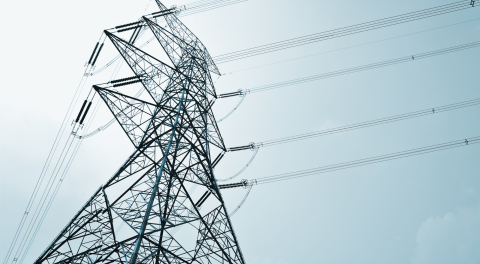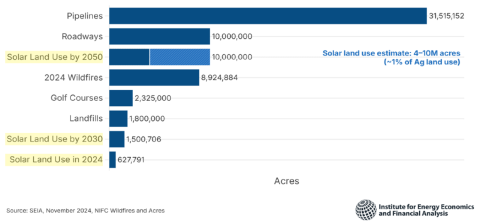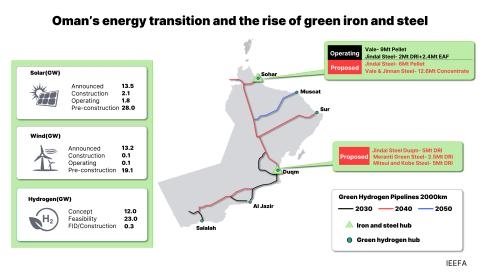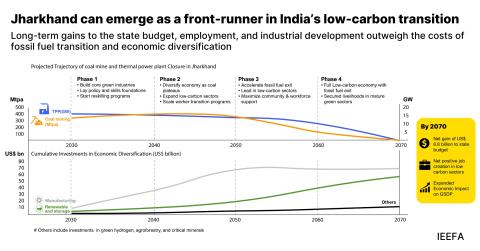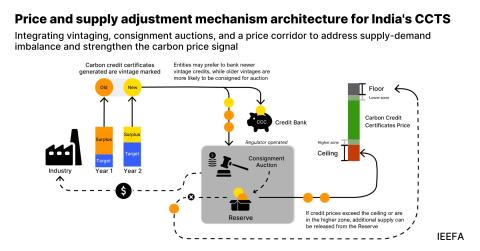IEEFA report findings: 2016 petroleum agreement between Guyana, ExxonMobil, et al.
Download Full Report
Key Findings
Guyana government officials face a decision on a request to renew an environmental permit for offshore oil operations. ExxonMobil has requested that the government weaken the environmental protections contained in the prior permit.
If Guyana grants this new concession to ExxonMobil, it will become part of a long line of one-sided decisions that have given ExxonMobil substantial financial benefits at the expense of Guyana’s taxpayers.
Recent reports show that the existing agreement is already a bad deal for Guyana. The oil companies receive an unfair revenue split, and Guyana is having to borrow money to pay for new spending,
Executive Summary
Guyana government officials face an upcoming decision on a request to renew an environmental permit for offshore oil operations in the Liza 1 field, an extensive area of seabed owned by Guyana. ExxonMobil has requested that the government weaken the environmental protections contained in the prior permit. Although Guyana and ExxonMobil had previously agreed to a policy of zero routine air emissions, the company is now asking Guyana to approve a system of “incremental non-routine” flaring. The change, if adopted, would effectively allow the company to rely on faulty equipment for natural gas emissions management and to provide a backup system in case of further system failure.
If Guyana grants this new concession to ExxonMobil, it will become part of a long line of one-sided decisions that have given ExxonMobil substantial financial benefits at the expense of Guyana’s taxpayers.
Recent reports show that the existing agreement is already a bad deal for Guyana. The oil companies receive an unfair revenue split, and Guyana is having to borrow money to pay for new spending. Guyana cannot close its budget deficits because it is receiving too little revenue from the Liza project. At the same time, Guyana has provided substantial tax giveaways to the oil companies and handed them a lucrative decommissioning deal that allows the companies to pocket $3.2 billion.
Specifically:
- ExxonMobil, Hess and the China National Offshore Oil Company (CNOOC) have received approximately G$752.4 billion (USD$3.6 billion) from the project, while Guyana has received G$127 billion (USD$607 million) through 2021—a 6-to-1 revenue gap that gives the oil companies an 85.5 percent split of revenue and only 14.5 percent to Guyana.
- IEEFA estimates that by 2027, Guyana will carry a hidden liability of more than G$6.27 trillion (USD$34 billion) owed to the oil companies. This assumes all development costs related to Liza 1,2,3,4 and Payara; decommissioning costs and tax giveaways. It does not include undisclosed pre-contract costs and undisclosed development costs for additional oil discoveries. IEEFA estimates these costs mean that Guyana’s per capita cost for the oil development is G$9.4 million (USD$44,000).
- Guyana will have to increase borrowing over the next five years. Since December 2019 the commencement of commercial operations Guyana’s total public debt has increased. In its first year of using its G$127 billion (USD$607 million) in revenues, the country borrowed G$87.8 billion ($420 million).
- Guyana will give away additional tax breaks to the oil companies amounting to approximately G$335.3 billion (USD$1.7 billion) over the next five years.
- Guyana will advance more than G$666.1 billion (USD$3.2 billion) in additional cash to the oil companies, purportedly to cover future costs of decommissioning. The government does not require the companies to set the money aside to make sure it is there when needed.
- IEEFA has identified at least four more areas of risk under which the contract’s provisions are likely to short-change Guyana. Those areas include project costs related to insurance, interest rates and borrowing, parent company charges and potential charges due to contract changes.










